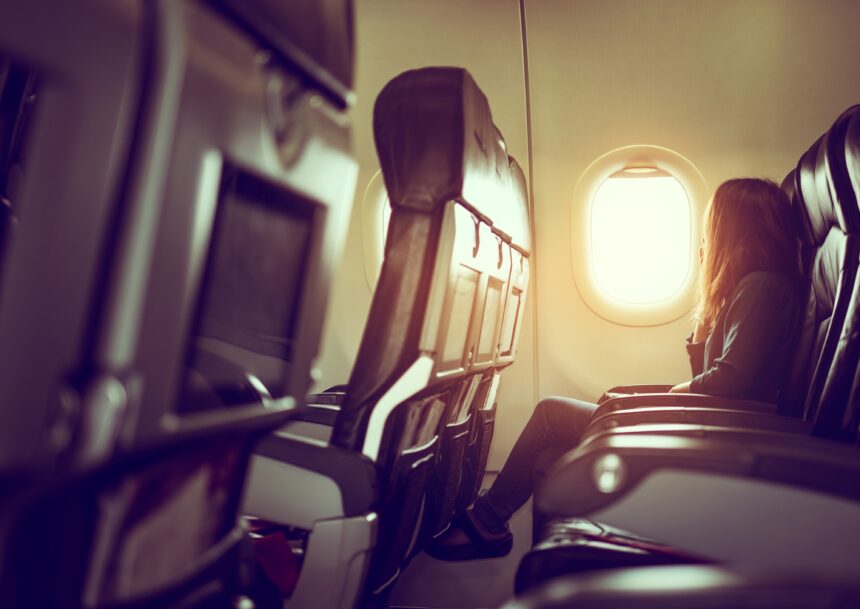In a time when air travel once seemed to have lost its charm, a renaissance is quietly unfolding above the clouds. Modern travelers, many of whom had resigned themselves to cramped seats and standardized service, are now rediscovering a side of aviation long thought to be confined to the golden age of jet-setting. Aboard the world’s most opulent aircraft, the art of flying has been reborn with the reemergence of luxury—ushering in a new golden age for those who fly first class.
Flights in today’s premium cabins have become more than just a means of transportation; they are immersive, curated experiences. As airlines invest millions into cabin design, service training, and culinary partnerships, they are creating something akin to boutique hotels in the sky. The evolution of first-class suites—complete with private doors, plush bedding, and five-star meals—represents a seismic shift in what travelers expect from long-haul international travel.
The change isn’t just cosmetic. What sets apart modern luxury flights is the attention to detail and personalization. Travelers stepping into these sanctuaries are no longer passengers—they are honored guests. In an era where time is a precious commodity, the journey itself has once again become a destination.
Redefining First-Class: Beyond Just a Seat on a Plane
To appreciate the modern first-class suite, one must understand how far the concept of luxury air travel has come. In the early decades of commercial aviation, flying was reserved for the elite. Dressed in their best attire, passengers were served multi-course meals while enjoying unparalleled views from wide, reclining seats. That spirit of elegance faded over time, sacrificed in favor of efficiency and cost-saving measures as the industry opened up to the masses.
However, today’s premium travelers are witnessing a revival. Leading airlines across Asia, the Middle East, and Europe are at the forefront of this revolution, crafting flights that resemble floating five-star hotels. The moment a traveler books one of these elite tickets, the experience begins—from private terminal check-ins to chauffeured car services and personalized concierge attention.
Step aboard, and the difference is immediately clear. Instead of seats, passengers are welcomed into private suites outfitted with closing doors, ambient lighting, and designer furnishings. It is not merely a place to sit; it is a space to dine, sleep, work, and relax in complete privacy. In this rarefied world, flights are no longer endured—they are cherished.
A Symphony of Comfort, Privacy, and Technology
Luxury in the sky today is an orchestration of three essential elements: privacy, comfort, and cutting-edge technology. When these elements are seamlessly woven together, the result is transformative. First-class cabins now boast sliding doors, adjustable privacy partitions, and even “double bed” configurations that allow companions to sleep side-by-side—a feat once thought impossible aboard a commercial jetliner.
These suites also come equipped with ultra-high-definition entertainment systems, noise-canceling headsets, touchscreen panels to control lighting and recline positions, and wardrobe spaces for personal garments. For many, the experience is akin to checking into a penthouse suite at 35,000 feet.
The focus on personalization extends to dining, where renowned chefs curate menus that rival the offerings of Michelin-starred establishments. Meals are not served on trays but are presented on elegant tableware, often with caviar and vintage Champagne as the opening course. With each meal tailored to individual preferences, even frequent travelers find something novel on every journey.
The Airlines Leading the Luxury Race
The competition to offer the world’s best first-class flights has given rise to some truly awe-inspiring innovations. Carriers such as Emirates, Singapore Airlines, and Etihad Airways have consistently pushed the boundaries, each aiming to outdo the other in comfort, aesthetics, and service.
Emirates, for example, stunned the aviation world with its fully enclosed suites inspired by Mercedes-Benz interiors, featuring virtual windows for center-aisle passengers and zero-gravity recline technology. Meanwhile, Singapore Airlines introduced separate beds and armchairs within its suites, allowing travelers to dine and sleep without compromise.
Etihad, not to be outdone, debuted the “Residence”—a three-room suite complete with a private bathroom, living space, and a dedicated butler trained at the Savoy. These offerings may come with premium price tags, but for those who demand excellence in every aspect of their journey, the experience is worth every penny.
Why the Timing is Perfect for a Luxury Air Travel Comeback
The resurgence of opulent flights is no coincidence. After the global pandemic grounded much of the industry, airlines were forced to reassess what mattered most to travelers. Cleanliness, space, and personalized service became non-negotiables. As a result, carriers shifted focus away from mass seating toward a model that favored exclusivity and premium care.
Additionally, the modern traveler is increasingly experience-driven. It’s no longer just about reaching a destination—it’s about how you get there. This is particularly true for high-net-worth individuals, digital nomads, and business leaders who view time spent traveling as valuable as time spent working or resting.
With fewer routes and flights during recovery phases, airlines used the opportunity to refine their premium offerings. The results are visible today in first-class cabins that reflect not only affluence but also innovation. This is not a temporary trend—it is a redefined standard in the premium segment of air travel.
Reimagining Long-Haul Travel: From Tedious to Transformative
Historically, long-haul flights have been associated with exhaustion, jet lag, and general discomfort. Today, for those in first class, they present an opportunity to rejuvenate, indulge, and even get ahead on work without interruption. Flatbeds, on-demand gourmet meals, and spa-inspired amenities help transform these hours in the sky into restorative experiences.
Some airlines now offer wellness programs as part of the first-class package, complete with guided meditation, in-flight skincare treatments, and special lighting that aligns with circadian rhythms to minimize jet lag. For business travelers, this means arriving sharper and more focused than ever before.
These advancements are also influencing how people plan their trips. Flights are no longer just the bridge between two exciting points; they are a highlight in themselves. Travelers are even booking first-class experiences purely for the joy of flying—an unimaginable notion just a decade ago.
The Psychology Behind Luxury Flights
There’s a deeper reason why luxury air travel is so appealing beyond the plush interiors and fine dining. It taps into a human desire for control, comfort, and exclusivity. High-end flyers don’t just want to avoid stress—they want to feel elevated, respected, and rewarded for their success.
The journey itself becomes a form of status and self-care. There’s something affirming about being greeted by name, having a drink poured just the way you like it, or drifting to sleep in a bed surrounded by the quiet hum of engines and soft ambient light. In a chaotic world, these flights offer calm, security, and a reaffirmation of one’s place in it.
Even as economic uncertainties and global challenges persist, the demand for premium flights continues to grow. This is because true luxury does not only reside in material goods—it’s in the emotion it evokes. And in the sky, emotion and experience are at the core of first-class innovation.
The Future of First-Class and Its Influence on the Industry
Looking ahead, the ripple effect of these high-end flights is likely to shape the entire aviation industry. Technologies and design philosophies pioneered in premium cabins often trickle down to business and even economy classes. Innovations in sustainability, seat ergonomics, and customer service all begin with elite flyers before becoming standard practice elsewhere.
Moreover, the bar for excellence has been raised. Airlines can no longer rely solely on brand reputation—they must consistently deliver extraordinary experiences to stay relevant in the luxury segment. This is fostering an environment of continuous improvement, where creativity and passenger feedback drive change.
First-class travelers are no longer simply customers—they are co-creators in a journey of perpetual refinement. Their expectations are shaping the future of air travel in ways that benefit everyone. And while not every traveler may fly in first class, the overall uplift in standards is something all passengers eventually enjoy.
Conclusion: More Than a Flight—It’s a Revival of Wonder
The golden age of air travel is not a memory—it is happening right now, thousands of feet above our heads. In the world’s finest first-class suites, the mundane has been replaced by the magnificent. Flights are no longer just schedules to keep or obstacles to endure; they are once again sources of wonder, possibility, and pleasure.
This revival is more than a luxury trend. It is a reminder of what travel can and should be—a celebration of movement, service, and human ingenuity. As we step into this era of airborne elegance, one thing becomes clear: the sky is not the limit; it’s only the beginning.









